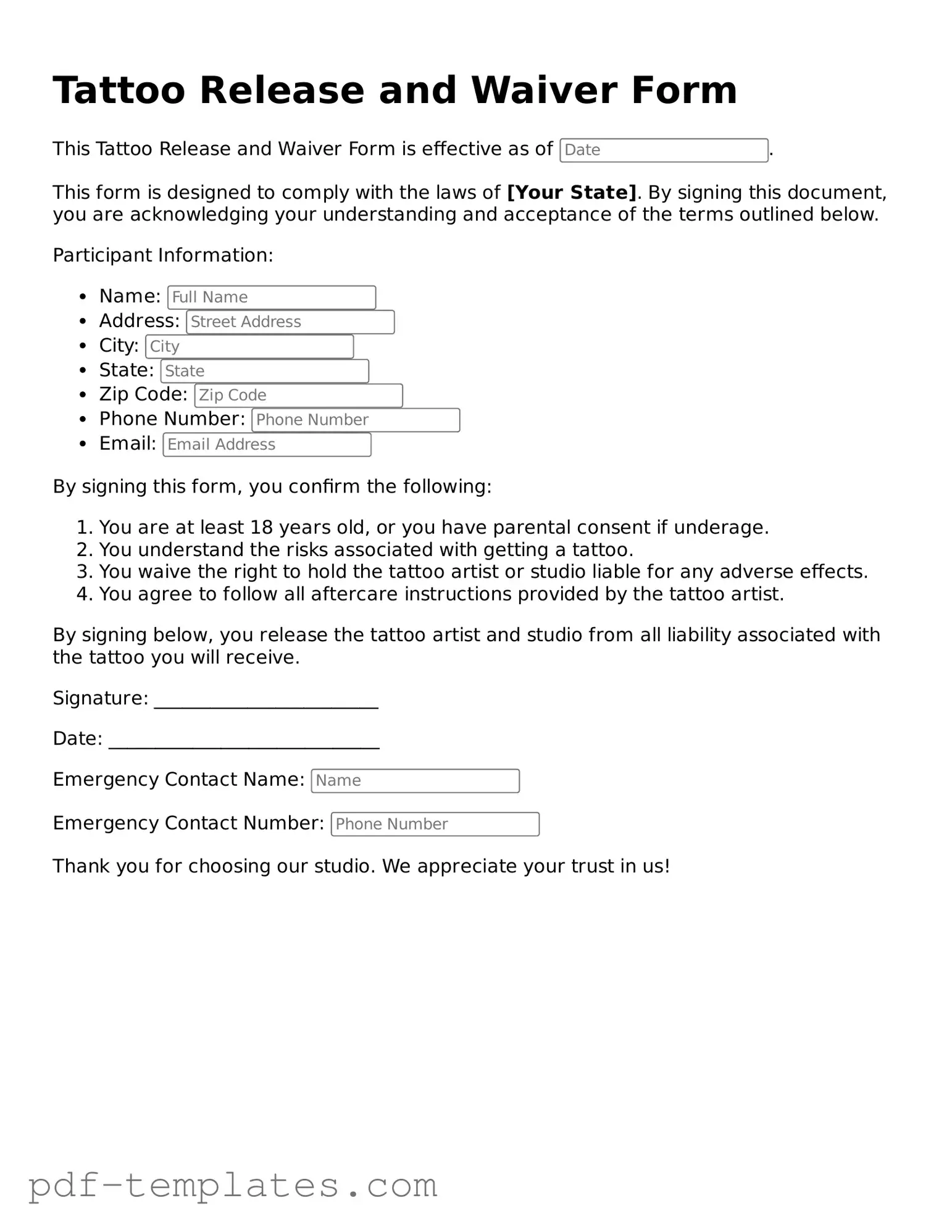A Photo Release form is similar to a Tattoo Release form in that both documents grant permission for the use of an individual's image or likeness. In the case of a Photo Release, the focus is on photographs taken of the person, often for promotional or commercial purposes. By signing this form, individuals allow photographers or companies to use their images without further compensation. Both forms protect the rights of the creator while ensuring that the individual understands how their image will be used.
A Model Release form also shares similarities with a Tattoo Release form. This document is commonly used in the fashion and advertising industries. It allows photographers and artists to use images of models in their work. Like the Tattoo Release, the Model Release outlines the rights of both parties and clarifies how the images can be used. This ensures that models are aware of the potential exposure their images may receive and agree to it in advance.
An Artistic Work Release form is another document that resembles a Tattoo Release form. This form is used when an artist creates a piece of work that features a person's likeness or personal attributes. By signing this release, the individual gives the artist permission to use their likeness in various forms of media. The agreement often includes details about how the artwork can be displayed or sold, similar to how a Tattoo Release specifies the use of tattoo designs.
A Video Release form is akin to a Tattoo Release form as well. This document allows filmmakers or content creators to use footage of individuals in their projects. The signer agrees to the use of their appearance in videos, which may be distributed online or through other channels. Just like the Tattoo Release, this form ensures that individuals understand their rights and the scope of how their likeness will be used in the final product.
For those interested in mitigating risk, the "Florida Release of Liability form" is an essential document that helps parties establish an understanding of responsibilities in various activities. It is crucial for anyone participating in events that may pose risks. To learn more, visit Florida Release of Liability form details.
Finally, a Consent for Use form is comparable to a Tattoo Release form. This document is often used in various contexts, such as medical or research settings. It grants permission for the use of a person’s information or likeness for specific purposes. While the context may differ, the underlying principle remains the same: individuals must be informed and agree to how their likeness or personal data will be utilized. This protects their rights and ensures transparency in the process.
